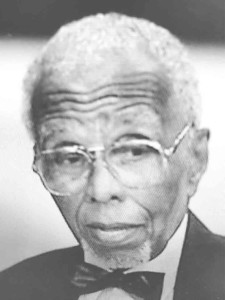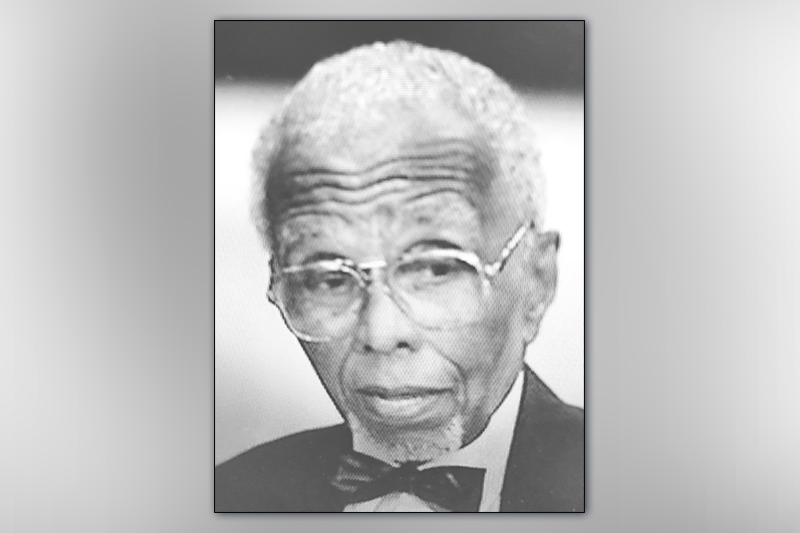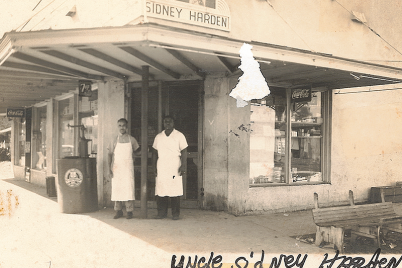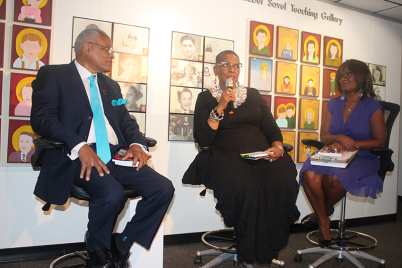Perkins T. Shelton was a political and civil rights activist and a staunch defender of justice and equality.
By Gwendolyn Reese
Perkins T. Shelton moved to St. Petersburg from Chicago in 1970 at an age when others might be thinking of retirement and relaxing, but not Shelton. He brought his zeal, dynamism, and charisma to his adopted city.
He was a political and civil rights activist and a staunch defender of justice and equality. According to an article in the Times dated October 19, 1989, Shelton, director of branch affairs for the NAACP, was concerned about the expiration of the affirmative action program for the City of St. Petersburg. In the article, he was quoted as saying: “We have to have some sort of protection. If we don’t, we will revert to the same old story.”
 He was as eloquent a speaker as he was a writer. We would often read his opinions in either the “Letters to the Editor” or “My View” columns in the St. Petersburg Times newspaper. I recall a “My View” article in 1989 in which he expressed his frustration with those opposed to raising standards and setting higher goals for students, citing cultural differences as an excuse.
He was as eloquent a speaker as he was a writer. We would often read his opinions in either the “Letters to the Editor” or “My View” columns in the St. Petersburg Times newspaper. I recall a “My View” article in 1989 in which he expressed his frustration with those opposed to raising standards and setting higher goals for students, citing cultural differences as an excuse.
In his letter, he stated: “I agree with those who proclaim that the basic formula for academic success, as well as personal success, is the amount of one’s investment in time, energy, motivation and most of all a genuine desire to succeed.”
In his trademark bowtie, he could be seen everywhere from the chambers of city council to the boardroom of the Democratic Party to the office of the NAACP. In 1981, he was hired by NAACP President Morris Milton to fill the newly created position of director of branch affairs and to open the new office at 1502 16th St. S. The office was formerly housed in the old Mercy Hospital.
Shelton served on the Environmental Development Commission, Housing Authority, Fair Housing Board, and as chairman of the legislative committee of the St. Petersburg Council on Human Relations. He was a Democratic precinct committeeman for more than 20 years and served as first vice president of the Democratic Black Caucus of Florida.
He was also a member of the Charter Review Commission and the Coalition of African-American Leadership, a group created in 1996 after the fatal shooting of 18-year-old TyRon Lewis by a white police officer.
Perkins, Milton, and other activists worked tirelessly to establish single-member districts. In 1982, Doug Jamerson was elected to the state legislature because of their efforts.
At the age of 80, he worked as a paralegal at Gulf Coast Legal Services and I had the honor of serving as first vice-president with him when he was elected secretary of the NAACP at the age of 88. Until just before his death at the age of 91, he was writing letters on behalf of the St. Petersburg Commission on Aging.
Shelton was a mentor to me and to many of the elected officials representing us today. He died in 2003 at the age of 91. I’ll end this article with a quote from me in the newspaper when he died:
“Whenever we sense injustice we are remembering Perkins and whenever we are stirred to action we are keeping him alive.”









